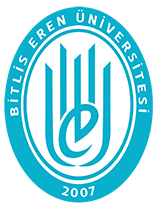| dc.description.abstract | Ranunculus plant species, one of the endemic plants, are utilized to treat a number of illnesses such as febrile diseases, rheumatism and inflammatory rashes due to their pharmacological and toxicological activities. Considering these properties, it was aimed to investigate the cytotoxic effects of Ranunculus poluninii on A549 and HCT116 cancer cell lines, Escherichia coli, Pseudomonas aeruginosa and Staphylococcus aureus bacteria and Candida albicans and Candida glabrata yeasts. For this purpose, the extract of the plant was obtained by methanol extraction. Stocks were prepared from this plant at different concentrations of 200 µg/mL, 100 µg/mL, and 50 µg/mL for A549 cancer cell line and 400 µg/mL, 200 µg/mL, 100 µg/mL, and 50 µg/mL for HCT116 cancer cell line and applied to the cell lines. The 3- [4,5dimethylthiazol-2 il]-2,5-diphenyl-tetrazolium bromide (MTT) assay was performed to evaluate the viability of the cells. In addition, plant extracts prepared at different concentrations of 800 µg/mL, 400 µg/mL, 200 µg/mL, 100 µg/mL, and 50 µg/mL were applied to Escherichia coli, Pseudomonas aeruginosa and Staphylococcus aureus, Candida albicans and Candida glabrata and minimum inhibitory concentration (MIC) values were determined. Our results showed that Ranunculus poluninii was reduced cell viability to 83.7% at 100 µg/mL and 79% at 200 µg/mL on A549 and HCT116 respectively. In addition, it decreased both Candida albicans and Candida glabrata growth to 91.5% at 800 µg/mL and 95.1% at 50 µg/mL respectively. Our results suggest that Ranunculus poluninii has anticancer effect and antifungal activity. | tr_TR |














